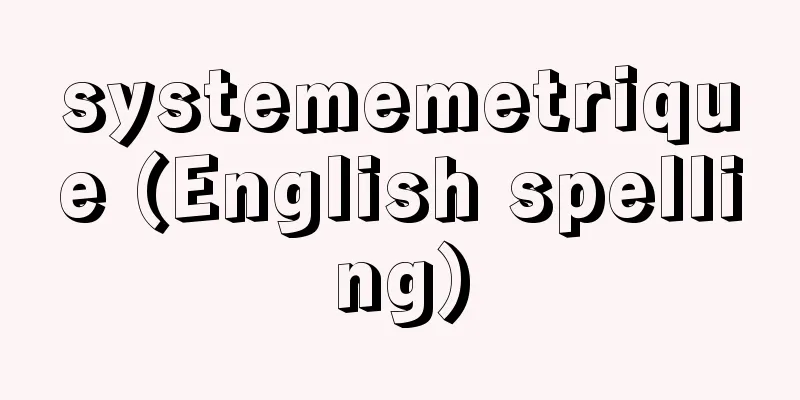Tegoto - Tegoto

|
A Japanese musical term. In general terms, it is synonymous with "tekuda" or "teren" and has also been written as "tegoto", but as a musical term it now refers to a long, instrumental interlude that is inserted in the middle of a song in a piece of jiuta or sokyoku. Pieces that place emphasis on the tegoto part are called "tegotomono", and are sometimes called "te no mono" or "temono". In the Edo period, it was written as "tegoto" or "kyokusetsu" and meant "hand" itself, and was a general term for classical sangen music such as shamisen kumite and nagauta. Gradually, however, it came to refer to purely instrumental music such as "Kinuta" and "Sugagaki", and also included nagauta and hauta pieces with independent and highly instrumental interludes. The simplest tegotomono structure is maeuta - tegoto - atouta, and in the early days, some tegotomono were structured in stages, and some even had makura (introduction) and chirashi (conclusion) sections before and after. Around the Kansei era (1789-1801), the classification of "tegotomono" was created in Osaka, and famous sangen tegotomono pieces such as "Zangetsu" and "Echigo Jishi" were created. As shamisen and koto ensemble performances became more sophisticated, more complex pieces in which tegoto appeared more than twice were produced; this trend was particularly evident in Kyoto from the Kasei era (1804-1830) onwards, and these pieces came to be known as 'Kyoto-style tegotomono' or 'Kyoto-style tegotomono', producing famous pieces such as "Yaegoromo" (Double Robes) and "Shiki no Nagame (View of the Four Seasons)." [Kazuko Tanigakiuchi] Source: Shogakukan Encyclopedia Nipponica About Encyclopedia Nipponica Information | Legend |
|
日本音楽用語。一般用語では「手管(てくだ)」「手練(てれん)」などと同義で、「手毎」とも書かれたが、音楽用語として現在では地歌・箏曲(そうきょく)の楽曲中、歌の途中に挟まれる器楽的なまとまりのある長い間奏部分をさす。手事部分に比重を置く曲を「手事物」といい、「手のもの」「手もの」などと称する場合もある。 江戸時代には「手琴」「曲節」などとも書かれ、「手」そのものを意味したり、三味線組歌や長歌(ながうた)などの三絃(さんげん)曲の古典的な曲種の総称であったが、しだいに『砧(きぬた)』『すががき』などの純器楽曲をさすようになり、長唄・端唄(はうた)などのうちその間奏部分の独立性・器楽性の高い楽曲をも含める語となった。もっとも単純な手事物の構成は、前歌―手事―後歌で、初期には段構成をとる手事もあり、さらにはその前後にマクラ(導入部)やチラシ(終結部)をもつ手事もできた。寛政(かんせい)(1789~1801)ごろから大坂で「手事物」という分類がなされ、『残月』『越後獅子(えちごじし)』のような三絃の手事物の名曲もつくられた。三絃と箏の合奏が高度に発達するとともに、手事が2回以上現れる複雑なものも生まれたが、この傾向はとくに化政(かせい)(1804~30)以降の京都で顕著になり、「京風手事物」「京流手事物」と称され、『八重衣(やえごろも)』『四季の眺(ながめ)』などの名曲が生まれた。 [谷垣内和子] 出典 小学館 日本大百科全書(ニッポニカ)日本大百科全書(ニッポニカ)について 情報 | 凡例 |
Recommend
Aoyama [town] - Aoyama
A former town in Naga District, Mie Prefecture. 80...
Five Classics - Gokyo
The five classic scriptures of "I Ching (Boo...
Inokashira Park Zoo
This zoo is located in Musashino City, Tokyo. It o...
American style purse net - American style purse net
…Also, at that time, Japan's overall fishing ...
Ishii Hakutei
Born: March 28, 1882 in Tokyo [Died] December 29, ...
Lycopods
…Lycopsida (also called Lycopods) is a group of f...
Kāsī (Kāsi) (English spelling) Kasi
...An ancient Indian kingdom in the eastern part ...
NDC - NDC
〘Noun〙 (Abbreviation for Nippon Decimal Classifica...
Hosso sect
This is a Buddhist school that was founded in the...
Dakins' solution
…A. Labarraque used it earlier in 1825 to clean i...
Jawasmi
…Entering the Gulf from the Strait of Hormuz, the...
Can-zhi Zheng-shi; Can-zhi Chêng-shih
A Chinese official title. During the Tang dynasty,...
Hatahata (sailfin sandfish) - Hatahata (English spelling)
A marine fish of the family Padae in the order Per...
Dome (English spelling)
Also called a cupola or dome. A roof or ceiling wi...
Schiøtz tonometer (English spelling)
…Currently used tonometers measure intraocular pr...









